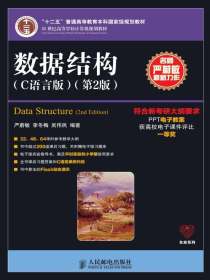类似推荐
内容简介
This book is intended to have three roles and to serve three associated audiences: anintroductory text on Bayesian inference starting from first principles, a graduate text oneffective current approaches to Bayesian modeling and computation in statistics and relatedfields, and a handbook of Bayesian methods in applied statistics for general users of andresearchers in applied statistics. Although introductory in its early sections, the book isdefinitely not elementary in the sense of a first text in statistics. The mathematics usedin our book is basic probability and statistics, elementary calculus, and linear algebra. Areview of probability notation is given in Chapter 1 along with a more detailed list of topicsassumed to have been studied. The practical orientation of the book means that the reader'sprevious experience in probability, statistics, and linear algebra should ideally have includedstrong computational components.
To write an introductory text alone would leave many readers with only a taste of theconceptual elements but no guidance for venturing into genuine practical applications, be-yond those where Bayesian methods agree essentially with standard non-Bayesian analyses.On the other hand, we feel it would be a mistake to present the advanced methods with-out first introducing the basic concepts from our data-analytic perspective. Furthermore,due to the nature of applied statistics, a text on current Bayesian methodology would beincomplete without a variety of worked examples drawn from real applications. To avoidcluttering the main narrative, there are bibliographic notes at the end of each chapter andreferences at the end of the book.
作者简介
Andrew Gelman是哥伦比亚大学统计学院的教授,应用统计学中心主任。他曾获得美国统计协会颁发的杰出统计应用奖、《美国政治科学评论》发表的最佳文章奖,以及统计学会主席理事会颁发的40岁以下人士杰出贡献奖。他的著作包括贝叶斯数据分析(与约翰·卡林、哈尔·斯特恩、大卫·邓森、阿基·维塔里和唐·鲁宾合著)、教学统计学等。
章节目录
Preface
Part I: Fundamentals of Bayesian Inference
1Probability and inference
I.IThe three steps of Bayesian data analysis
1.2General notation for statistical inference
1.3Bayesian inference
1.4Discrete examples: genetics and spell checking
1.5Probability as a measure of uncertainty
1.6Example: probabilities from football point spreads
1.7Example: calibration for record linkage
1.8Some useful results from probability theory
1.9Computation and software
I.I0 Bayesian inference in applied statistics
i.Ii Bibliographic note
1.12 Exercises
2Single-parameter models
2.1Estimating a probability from binomial data
2.2Posterior as compromise between data and prior information
2.3Summarizing posterior inference
2.4Informative prior distributions
2.5Normal distribution with known variance
2.6Other standard single-parameter models
2.7Example: informative prior distribution for cancer rates
2.8Noninformative prior distributions
2.9Weakly informative prior distributions
2.10 Bibliographic note
2.11 Exercises
3Introduction to multiparameter models
3.1Averaging over 'nuisance parameters'
3.2Normal data with a noninformative prior distribution
3.3Normal data with a conjugate prior distribution
3.4Multinomial model for categorical data
3.5Multivariate normal model with known variance
3.6Multivariate normal with unknown mean and variance
3.7Example: analysis of a bioassay experiment
3.8Summary of elementary modeling and computation
3.9Bibliographic note
3.10 Exercises
4Asymptotics and connections to non-Bayesian approaches
4.1Normal approximations to the posterior distribution
4.2Large-sample theory
4.3Counterexamples to the theorems
4.4Frequency evaluations of Bayesian inferences
4.5Bayesian interpretations of other statistical methods
4.6Bibliographic note
4.7Exercises
5Hierarchical models
5.1 Constructing a parameterized prior distribution
5.2Exchangeability and hierarchical models
5.3Bayesian analysis of conjugate hierarchical models
5.4Normal model with exchangeable parameters
5.5Example: parallel experiments in eight schools
5.6Hierarchical modeling applied to a meta-analysis
5.7Weakly informative priors for variance parameters
5.8Bibliographic note
5.9Exercises
Part II: Fundamentals of Bayesian Data Analysis
6Model checking
6.1The place of model checking in applied Bayesian statistics
6.2Do the inferences from the model make sense?
6.3Posterior predictive checking
6.4Graphical posterior predictive checks
6.5Model checking for the educational testing example
6.6Bibliographic note
6.7Exercises
?Evaluating, comparing, and expanding models
7.1Measures of predictive accuracy
7.2Information criteria and cross-validation
7.3Model comparison based on predictive performance
7.4Model comparison using Bayes factors
7.5Continuous model expansion
7.6Implicit assumptions and model expansion: an example
7.7Bibliographic note
7.8Exercises
8Modeling accounting for data collection
8.1Bayesian inference requires a model for data collection
8.2Data-collection models and ignorability
8.3Sample surveys
8.4Designed experiments
8.5Sensitivity and the role of randomization
8.6Observational studies
8.7Censoring and truncation
8.8Discussion
8.9Bibliographic note
8.10 Exercises
9Decision analysis
9.1 Bayesian decision theory in different contexts
9.2Using regression predictions: survey incentives
9.3Multistage decision making: medical screening
9.4Hierarchical decision analysis for home radon
9.5Personal vs. institutional decision analysis
9.6Bibliographic note
9.7Exercises
Part III: Advanced Computation
10 Introduction to Bayesian computation
10.1 Numerical integration
10.2 Distributional approximations
10.3 Direct simulation and rejection sampling
10.4 Importance sampling
10.5 How many simulation draws are needed?
10.6 Computing environments
10.7 Debugging Bayesian computing
10.8 Bibliographic note
10.9 Exercises
11 Basics of Markov chain simulation
11.1 Gibbs sampler
11.2 Metropolis and Metropolis-Hastings algorithms
11.3 Using Gibbs and Metropolis as building blocks
11.4 Inference and assessing convergence
11.5 Effective number of simulation draws
11.6 Example: hierarchical normal model
11.7 Bibliographic note
11.8 Exercises
12 Computationally efficient Markov chain simulation
12.1 Efficient Gibbs samplers
12.2 Efficient Metropolis jumping rules
12.3 Further extensions to Gibbs and Metropolis
12.4 Hamiltonian Monte Carlo
12.5 Hamiltonian Monte Carlo for a hierarchical model
12.6 Stan: developing a computing environment
12.7 Bibliographic note
12.8 Exercises
13 Modal and distributional approximations
13.1 Finding posterior modes
13.2 Boundary-avoiding priors for modal summaries
13.3 Normal and related mixture approximations
13.4 Finding marginal posterior modes using EM
13.5 Conditional and marginal posterior approximations
13.6 Example: hierarchical normal model (continued)
13.7 Variational inference
13.8 Expectation propagation
13.9 Other approximations
13.10 Unknown normalizing factors
13.11 Bibliographic note
13.12 Exercises
Part IV: Regression Models
14 Introduction to regression models
14.1 Conditional modeling
14.2 Bayesian analysis of classical regression
14.3 Regression for causal inference: incumbency and voting
14.4 Goals of regression analysis
14.5 Assembling the matrix of explanatory variables
14.6 Regularization and dimension reduction
14.7 Unequal variances and correlations
14.8 Including numerical prior information
14.9 Bibliographic note
14.10 Exercises
15 Hierarchical linear models
15.1 Regression coefficients exchangeable in batches
15.2 Example: forecasting U.S. presidential elections
15.3 Interpreting a normal prior distribution as extra data
15.4 Varying intercepts and slopes
15.5 Computation: batching and transformation
15.6 Analysis of variance and the batching of coefficients
15.7 Hierarchical models for batches of variance components
15.8 Bibliographic note
15.9 Exercises
16 Generalized linear models
16.1 Standard generalized linear model likelihoods
16.2 Working with generalized linear models
16.3 Weakly informative priors for logistic regression
16.4 Overdispersed Poisson regression for police stops
16.5 State-level opinons from national polls
16.6 Models for multivariate and multinomial responses
16.7 Loglinear models for multivariate discrete data
16.8 Bibliographic note
16.9 Exercises
17 Models for robust inference
17.1 Aspects of robustness
17.2 Overdispersed versions of standard models
17.3 Posterior inference and computation
17.4 Robust inference for the eight schools
17.5 Robust regression using t-distributed errors
17.6 Bibliographic note
17.7 Exercises
18 Models for missing data
18.1 Notation
18.2 Multiple imputation
18.3 Missing data in the multivariate normal and t models
18.4 Example: multiple imputation for a series of polls
18.5 Missing values with counted data
18.6 Example: an opinion poll in Slovenia
18.7 Bibliographic note
18.8 Exercises
Part V: Nonlinear and Nonparametric Models
19 Parametric nonlinear models
19.1 Example: serial dilution assay
19.2 Example: population toxicokinetics
19.3 Bibliographic note
19.4 Exercises
20 Basis function models
20.1 Splines and weighted sums of basis functions
20.2 Basis selection and shrinkage of coefficients
20.3 Non-normal models and regression surfaces
20.4 Bibliographic note
20.5 Exercises
21 Gaussian process models
21.1 Gaussian process regression
21.2 Example: birthdays and birthdates
21.3 Latent Gaussian process models
21.4 Functional data analysis
21.5 Density estimation and regression
21.6 Bibliographic note
21.7 Exercises
22 Finite mixture models
22.1 Setting up and interpreting mixture models
22.2 Example: reaction times and schizophrenia
22.3 Label switching and posterior computation
22.4 Unspecified number of mixture components
22.5 Mixture models for classification and regression
22.6 Bibliographic note
22.7 Exercises
23 Dirichlet process models
23.1 Bayesian histograms
23.2 Dirichlet process prior distributions
23.3 Dirichlet process mixtures
23.4 Beyond density estimation
23.5 Hierarchical dependence
23.6 Density regression
23.7 Bibliographic note
23.8 Exercises
Appendixes
A Standard probability distributions
A.1Continuous distributions
A.2Discrete distributions
A.3Bibliographic note
B Outline of proofs of limit theorems
B.1Bibliographic note
C Computation in R and Stan
C.1Getting started with R and Stan
C.2Fitting a hierarchical model in Stan
C.3Direct simulation, Gibbs, and Metropolis in R
C.4Programming Hamiltonian Monte Carlo in R
C.5Further comments on computation
C.6Bibliographic note
References
Author Index
Subject Index
贝叶斯数据分析(第3版)是2020年由世界图书出版公司出版,作者[美]安德鲁·格尔曼。
得书感谢您对《贝叶斯数据分析(第3版)》关注和支持,如本书内容有不良信息或侵权等情形的,请联系本网站。

















